Medici Chapels in Florence: San Lorenzo Church
Home » Things to Do » Medici Chapels
Tucked behind the grand Basilica of San Lorenzo, the Medici Chapels are one of the top city attractions in Florence—and for good reason!
These stunning chapels, built in the sixteenth and seventeenth centuries as a final resting place for the powerful Medici family, are bursting with history, mystery, and marble. Step inside and you’ll find the breathtaking New Sacristy, designed by none other than Michelangelo himself.
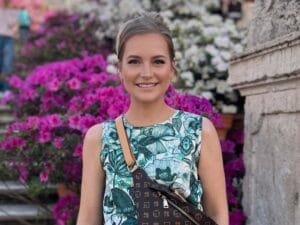
- Updated on

With its dreamy sculptures and dramatic architecture, this spot is truly a hidden gem. Whether you’re a history buff, art lover, or just curious about Florence’s famous past, the Medici Chapel is a must-see. Ready to explore where art and power meet? Keep reading—we’re just getting started!
Author

Welcome!
Welcome to Florence Awaits!
My name is Allie.
Italy is one of my favorite countries to visit in Europe, especially Florence!
I love everything the city has to offer. From the architecture to the most delicious food and wine, Florence has it all. So, come with me on this beautiful journey through Florence.
Allie
At GetYourGuide you will find an extensive selection of tickets and tours in Florence.
The best thing about it: you save valuable time as you don't have to wait in line at many sights.
Most tickets can be canceled free of charge and the company has an excellent reputation!
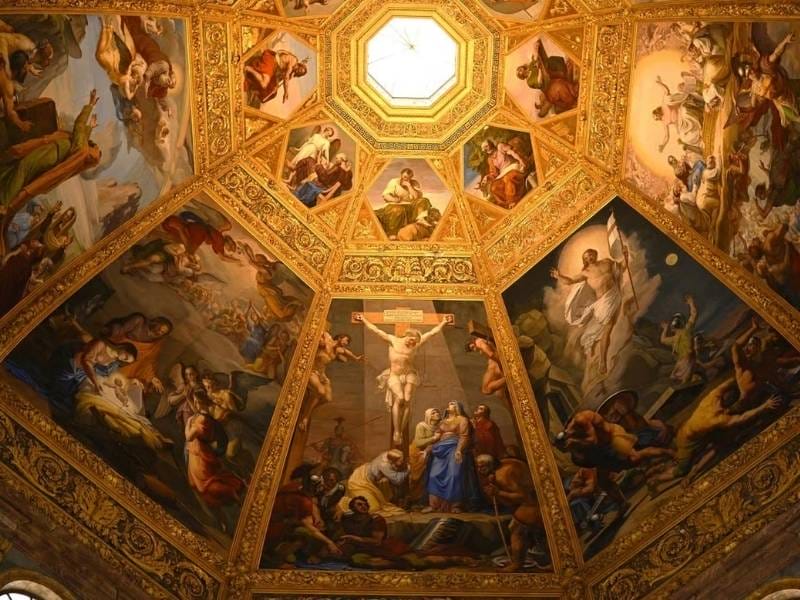
Tickets & Tours
Best tours, tickets & activities:
Ticket Information:
Full ticket: €9; Reduced (18–25 yo): €2
Reserve online via B-ticket (official) — €3 reservation fee
Michelangelo’s Secret Room requires separate booking & opens periodically; reserve well in advance
Skip‑the‑line tickets (~€15+) available, often bundled with audio guide/apps
Free entry: 1st Sunday/month + Apr 25, Jun 2, Nov 4
Address:
Piazza di Madonna degli Aldobrandini 6, 50123 Firenze (Florence, Tuscany) — part of the Basilica di San Lorenzo complex
Transportation:
Bus lines C2–C4 to Stazione Via Panzani, or Lines 14/23 to Via De’ Pucci — just a 2–3 minute walk
Metro T2 to Unità — about a 3-minute walk
Nearby:
Duomo Florence: 5 minute walk.
Uffizi Gallery – 12-minute walk.
Basilica of San Lorenzo – adjacent
Recommended exploration time:
Plan for 1.5–2 hours:
New Sacristy + Secret Room → ~45 min
Chapel of the Princes → ~30 min
Crypt and museum area → ~30 min
Nearby Sights (optional add-ons):
Uffizi: 1.5-2.5 hours
Opening hours:
Wed–Mon: 08:15–18:50 (last admission 40 min before close)
Closed: Tuesdays, Dec 25, Jan 1, May 1, 2nd & 4th Sundays, 1st/3rd/5th Mondays
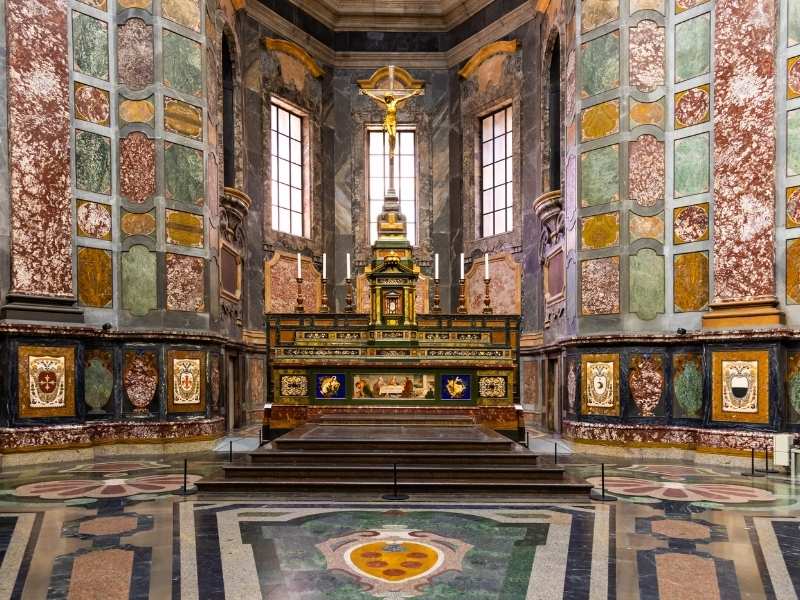
What are the Medici Chapels?
The Medici Chapels form part of the larger Church of San Lorenzo—or as locals call it, San Lorenzo in Florence. This church, one of the city’s oldest, was essentially the private family church of the legendary Medici family. Yep, Lorenzo the Magnificent, Cosimo, Giuliano, and the rest of the crew all walked these marble floors. Even Cardinal Giulio, who later became Pope Clement VII, had his roots here.
The chapels were built between the sixteenth and seventeenth centuries and serve as the final resting place for many members of the Medici family. It’s not just a crypt or a place of mourning, though—it’s an extraordinary fusion of art, power, and spirituality.
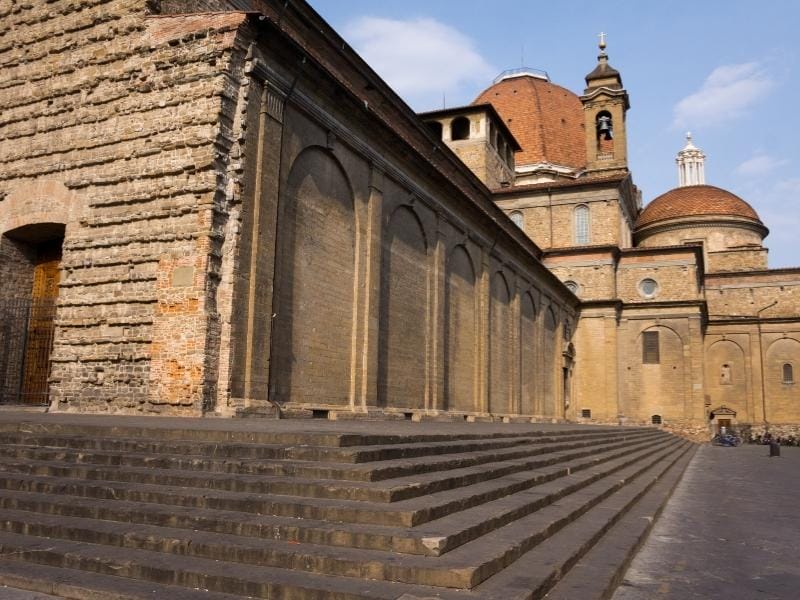
The Basilica of San Lorenzo: The Church of the Medici
Before we get into the chapels themselves, let’s talk about the Basilica of San Lorenzo, or the Church of the Medici. Designed in part by Brunelleschi, the church is a fine example of early Renaissance architecture and was once the parish church of the Medici. Imagine strolling into church on a Sunday and bumping into Pope Leo X, or young Cardinal Giulio, both of whom would go on to shape the religious and political future of Europe. It was here that their story began, and just behind it, it continues—etched in marble.
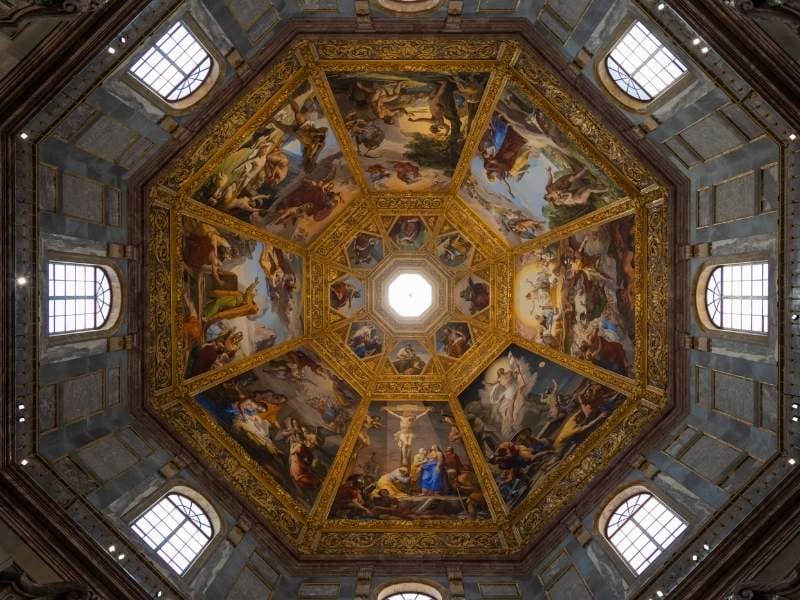
The Chapel of the Princes (Cappella dei Principi)
Now let’s talk drama and opulence. The Chapel of the Princes—or Cappella dei Principi—is the grandest space in the entire complex. This octagonal mausoleum with its soaring dome is the most visually striking part of the chapels. Designed by Matteo Nigetti and funded by the powerful Medici Grand Dukes, it was created to be nothing less than magnificent.
Among those honored here are Cosimo II, Ferdinando I, and others whose elaborate sarcophagi (sarcophagus) are encrusted with vibrant semi-precious stones like lapis lazuli and jasper. These rulers didn’t just want to rule Tuscany—they wanted to rest in eternal style.
The New Sacristy: Michelangelo’s Masterpiece
If you’re an art lover (or even if you’re not), the New Sacristy will absolutely blow you away. Designed and built by Michelangelo, it’s a sculptural masterpiece unlike any other. This room was commissioned by Pope Clement VII—formerly Cardinal Giulio—and houses the tombs of Giuliano, Duke of Nemours, and Lorenzo de’ Medici, Duke of Urbino.
Michelangelo’s sculpture work here is emotionally rich and deeply symbolic. On Giuliano’s tomb, he sculpted Day and Night, while on Lorenzo’s, we find Dawn and Dusk—allegories of time, change, and mortality. Lorenzo and Giuliano, once great leaders of Florence, are immortalized here in the marble forms of warrior princes and contemplative dukes.

Michelangelo’s Secret Room
Yes, you read that right—Michelangelo’s secret room is a real thing! Discovered only recently (in the 1970s), this hidden chamber lies beneath the New Sacristy. While hiding from political enemies—probably during unrest following the Medici’s exile—Michelangelo sketched figures and designs on the walls using charcoal. It’s not always open to the public, but if you ever get the chance to peek inside, do it! It’s like opening the diary of a genius.
The Old Sacristy
Let’s not forget the Old Sacristy, designed by Brunelleschi. Although not part of the official Medici Chapels, it sits inside the Church of San Lorenzo and holds the tomb of Giovanni di Bicci de’ Medici, the man who set the entire Medici dynasty in motion. It’s more austere and geometrical, reflecting early Renaissance ideals.
The Crypt: Quiet and Powerful
Beneath the Chapel of the Princes, you’ll find the crypt, a more peaceful and minimalistic space. Here rest the remains of lesser-known Medici family members and also members of the House of Lorraine, who succeeded the Medici as rulers of Tuscany. This part of the visit often gets overlooked, but it’s deeply moving, especially when paired with the museum area that details the complex history of the Medici dynasty.
A Note on Pietro Benvenuti and the Dome
Let’s not forget the sky-high drama above: the dome of the Chapel of the Princes, painted in the 1800s by Pietro Benvenuti. His work features biblical scenes as well as Medici rulers styled as heroic figures. It’s a perfect final flourish to an already spectacular space.
My Tips for Visiting
Go early or late to avoid the biggest crowds—this really is one of the top city attractions in Florence.
Don’t rush through the New Sacristy. Every detail Michelangelo crafted speaks volumes.
Bring a guidebook or join a guided tour. There are layers of Florentine history hidden in every marble curve and painted ceiling.
Take a break in the crypt. It’s cool, calm, and emotionally powerful—especially after the grandeur upstairs.
So if you’re wandering the cobbled streets of Florence and wondering how the Medici rose to such fame, fortune, and eternal remembrance, step into the Medici Chapels. You won’t just see art. You’ll feel the weight of Tuscany’s most powerful legacy.
At GetYourGuide you will find an extensive selection of tickets and tours in Florence.
The best thing about it: you save valuable time as you don't have to wait in line at many sights.
Most tickets can be canceled free of charge and the company has an excellent reputation!
FAQ: Medici Chapels in Florence
Who was Cardinal Giulio?
Cardinal Giulio de’ Medici was a key figure in the family’s history. He later became Pope Clement VII and commissioned Michelangelo to design the New Sacristy.
Who are Lorenzo and Giuliano?
They were key figures of the Medici’s golden age. Lorenzo the Magnificent and his brother Giuliano represented the height of the family’s cultural and political influence. Their memory is honored throughout the chapels.
What is the significance of Lorenzo de’ Medici, Duke of Urbino?
He was the grandson of Lorenzo the Magnificent and is buried in the New Sacristy. His tomb, sculpted by Michelangelo, includes the allegorical figures of Dawn and Dusk.
Is Cosimo II buried in the Medici Chapels?
Yes, Cosimo II, one of the Medici Grand Dukes of Tuscany, is entombed in the Chapel of the Princes beneath an elaborate sarcophagus made of precious stones.
Was the site only for Medici burials?
Primarily, yes. The chapels were designed as the grand mausoleum of the Medici family, though members of the House of Lorraine are also buried in the crypt.
Are the Medici Chapels part of the Church of San Lorenzo?
Yes, the chapels are an integral part of the Church of San Lorenzo, which served as the Medici’s official family church.

Allie
Hey everyone! I’m Allie, and I love great Italian food and the relaxed atmosphere in Florence! My favorite thing to do is people watching at a local cafe while drinking a glass of vino!
Did you know that …
By purchasing through my links, you support me at no additional cost.
Thank you for your support. ♥️
via GetYourGuide
Hotels in Florence
via Booking.com
Flights to Florence
via Skyscanner
Be sure to also check out:
